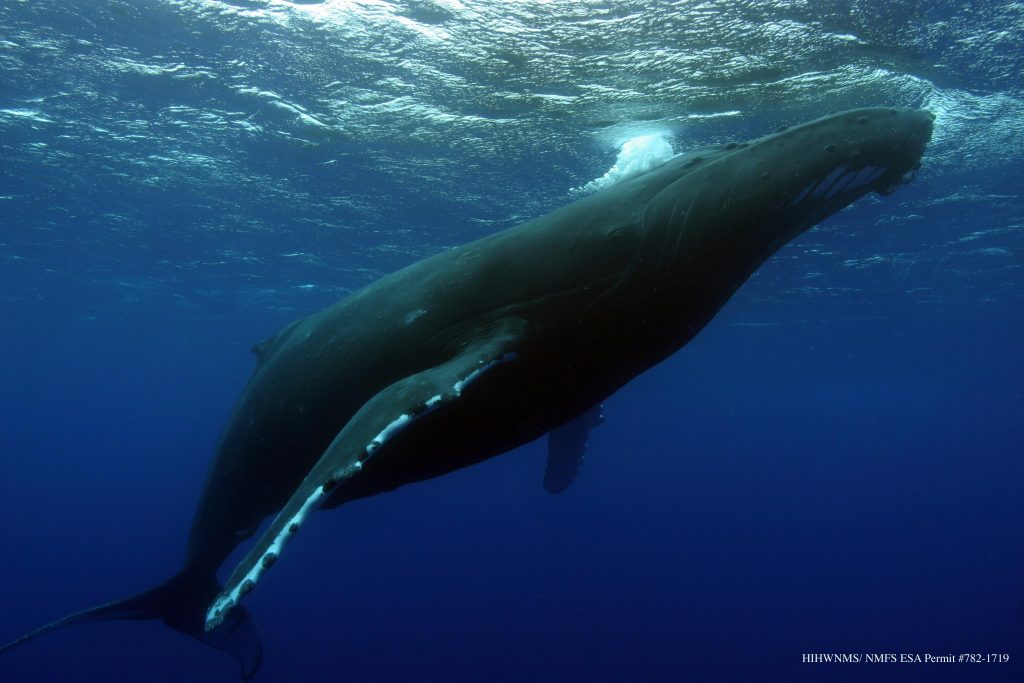UH: Humpback whales may steer clear of Hawaiʻi due to climate change

Humpback whales may one day avoid Hawaiian waters due to climate change and rising greenhouse gasses, according the findings of a new paper published in Frontiers in Marine Science by a team of researchers including three University of Hawaiʻi at Mānoa graduate students.
The students include: Hannah von Hammerstein and Renee Setter from the Department of Geography and Environment in the College of Social Sciences, and Martin van Aswegen from the Marine Mammal Research Program in the Institute for Marine Biology.
Humpback whales are known to migrate toward tropical coastal waters, such as Hawai‘i’s, where they give birth to their calves. These areas lay in regions with sea surface temperatures ranging between 21 and 28 degrees Celsius (approximately 70–82 degrees Fahrenheit), and the whales typically return to the same sites annually.
According to von Hammerstein, Setter, van Aswegen and co-researchers from the Pacific Whale Foundation, anthropogenic climate change is warming the oceans at unprecedented rates. At the current pace, it is likely that some of these breeding grounds will heat up past the 21–28°C temperature range over the next century.
Using a statistical “delta downscaling” method to increase the resolution of global sea surface temperatures and track the critical 21–28°C isotherms (lines drawn on a map or chart joining points with the same temperature) that border humpback whale breeding grounds throughout the 21st century, research suggests two possible climate change scenarios:
- By 2100, in a worst case scenario with continuing high development and unabated carbon emissions, 67% of humpback whale breeding grounds will surpass the critical sea surface temperature of 28°C.
- In a “middle-of-the-road” scenario with global and international institutions working toward emission mitigation goals, that number would fall to 35% of breeding grounds.
“We expected to see critical warming in some of the breeding grounds, but the number of critically affected areas was a surprise,” said von Hammerstein in a UH press release. “While the results of the study are daunting, they also highlight the differences between the two emission scenarios and what still can be won by implementing emission mitigation measures.”
Setter said, “It’s really crucial that we try to reduce our greenhouse gas emissions and really try to stay on that ‘middle-of-the-road’ greenhouse gas emissions scenario at the very least, just so that we can save as many of those breeding grounds as possible from surpassing that critical temperature threshold.”
The researchers note that, while it is currently not known whether humpback whales will continue to migrate to breeding grounds above 28°C, they hope their findings may be an incentive for policymakers to work toward reducing emissions, not only in Hawaiʻi but also on an international level.
“Our findings provide yet another example of what is to come with anthropogenic climate change, with humpback whales representing merely one impacted species,” according to van Aswegen. “Improving our understanding of how ecosystems are going to change is critical for the effective and timely implementation of mitigative measures.”









